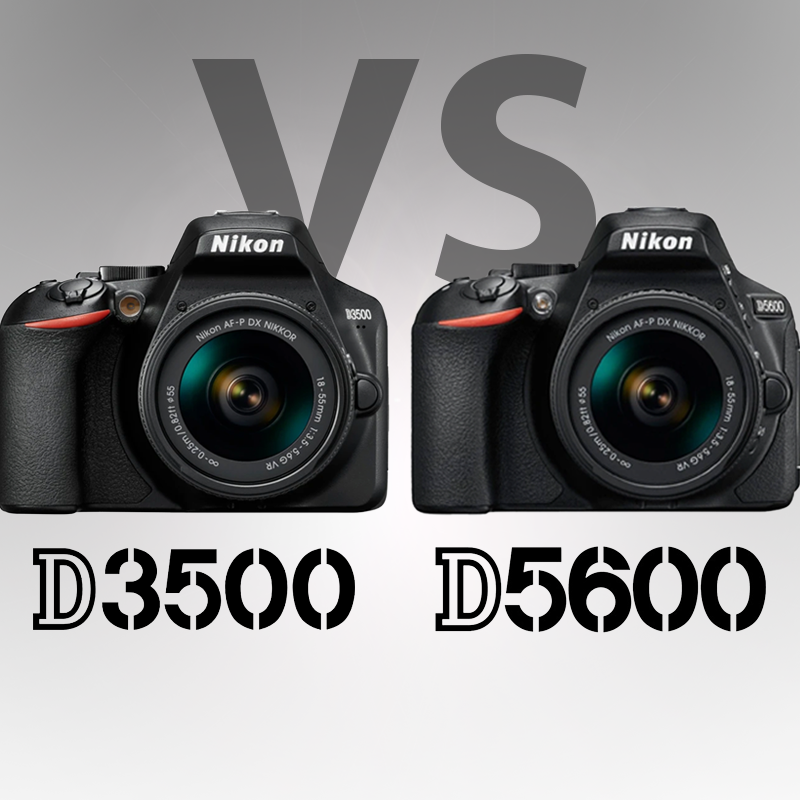When a customer comes into the store looking to buy a new camera for the first time, typically they’ve done a little bit of research and have a few cameras in mind. When upgrading from your phone to a digital camera, you should expect there to be a learning curve. In fact, a lot of people steer clear from digital cameras because their phone is so convenient and easy to use. We can’t tell you how many times we’ve heard, “Are you sure this camera will be better than my phone?” Yes, the answer is yes. Learning how to use a DSLR or mirrorless camera will take some practice, but finding the right camera to get started with is the first step.
Most of the time, if a customer has used a particular brand in the past, they will tend to stay loyal to that brand. For example, we had a customer come in looking for an entry-level Nikon camera because he had experience with one previously. He had two cameras in mind—the D3500 and D5600, both cameras intended for the beginner photographer. He had done some research and even watched a few YouTube videos. So, we decided to lay out the pros and cons of each camera. Let’s take a look at what those are below:

Nikon D3500 vs. D5600 Specification Chart
|
Camera Feature |
Nikon D3500 | Nikon D5600 |
| Mount Type | F Mount | F Mount |
| Sensor Resolution | 24.2 MP | 24.2 MP |
| Sensor Type | CMOS | CMOS |
| Sensor Size | 23.5 mm x 15.6 mm | 23.5 mm x 15.6 mm |
| Image Size | 6,000 x 4,000 | 6,000 x 4,000 |
| Image Processor | EXPEED4 | EXPEED4 |
| Viewfinder Type | Pentaprism | Pentaprism |
| Native ISO Sensitivity | 100-25,600 | 100-25,600 |
| Dust Reduction/Sensor Cleaning | No | Yes |
| Calibrations | No | No |
| Built-in Flash | Yes | Yes |
| Storage | 1 SD card slot | 1 SD card slot |
| Continuous Shooting Speed | 5 FPS | 5 FPS |
| Max Shutter Speed | 1/4000 to 30 sec. | 1/4000 to 30 sec. |
| Number of AF Points | 11 AF points | 39 AF points |
| AF Detection Range | -1 to 19 EV | -1 to 19 EV |
| Video Max Resolution | 1080p at 60/50/30/25/24p | 1080p at 60/50/30/25/24p |
| Audio Recording | Built-in stereo microphone | Built-in stereo microphone, optional external stereo microphone |
| Headphone Jack | No | No |
| LCD Type | Built-in | Articulating Touch Screen |
| LCD Size | 3" | 3.2" |
| LCD Resolution | 921,000 dots | 1,370,000 dots |
| Built-in GPS | No | No |
| Wi-Fi | No | Yes |
| Bluetooth | Yes | Yes |
| Battery Life | 1,550 shots | 970 shots |
| Battery Type | EN-EL14a | EN-EL14a |
| Weather-Sealed Body | No | No |
| USB Version | 2.0 | 2.0 |
| Weight | 365 g | 465 g |
| Dimensions | 124 mm x 97 mm x 69.5 mm | 124 mm x 97 mm x 70 mm |
| MSRP Price | $396.95 | $646.95 |
Why Choose the D3500 Over the D5600
To start, the D3500 and the D5600 have a lot of the same features. For example, they have the same 24MP APSC-CMOS Sensor, meaning the image quality is virtually going to be the same. They even have the same dimensions, only the D3500 is going to weigh about 100g less. In addition to the weight, it will have a better battery life, 1550 shots compared to 970 in the D5600. The D3500 is newer and came out in August 2018 while the D5600 came out in November 2016. The D3500 is going to be a cheaper option with a current price of $396.95 for an 18-55mm lens kit compared to $646.95 for the D5600 with the same kit.
Why Choose the D5600 over the D3500
Although the D5600 is $150 more, you will be paying for some upgraded features. The first you will notice is an articulating touch screen. The LCD screen is also 0.2” larger and will have a higher resolution with 1.037k dots vs 921k dots in the D3500. Both cameras come with Bluetooth capabilities, but the D5600 takes it one step further with Wi-Fi for better connectivity and image transfers. In regards to autofocus, the D5600 has 39 AF points compared to only 11 in the D3500. If you’re looking to shoot some video, it has a microphone port for external microphones and the capability to shoot time-lapses. Plus, in tough lighting situations, it has AE bracketing.
Whether you choose the D3500 or D5600, it’s an upgrade from your camera phone. Right now, the iPhone 11 Pro has 12 megapixels, which is incredible for how small the sensor is, but it still doesn’t compare. Plus, if you are looking to print any of your images, using a digital camera with higher megapixels is always going to be the better option. If you decide otherwise, you will have pixelated prints.



